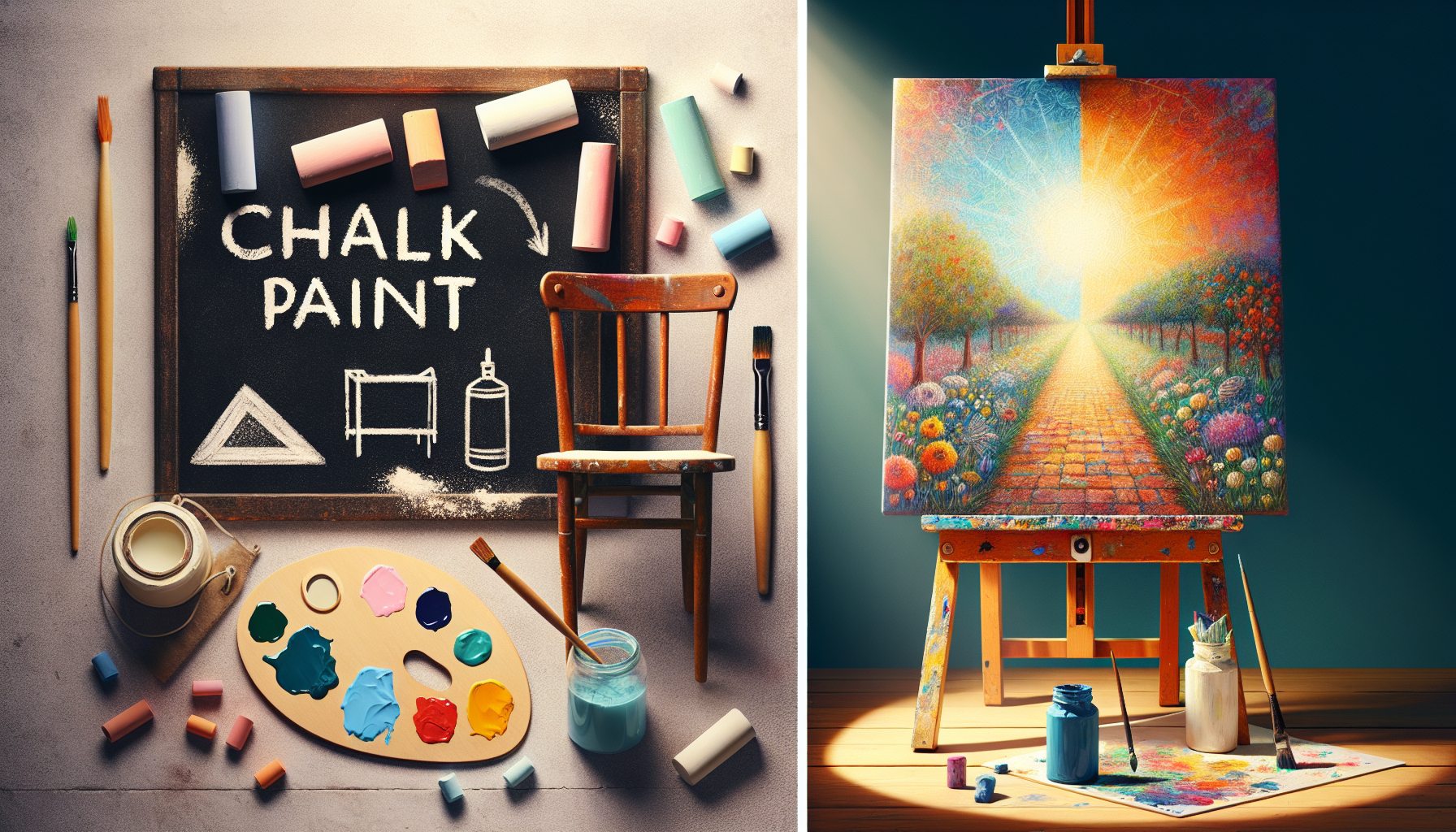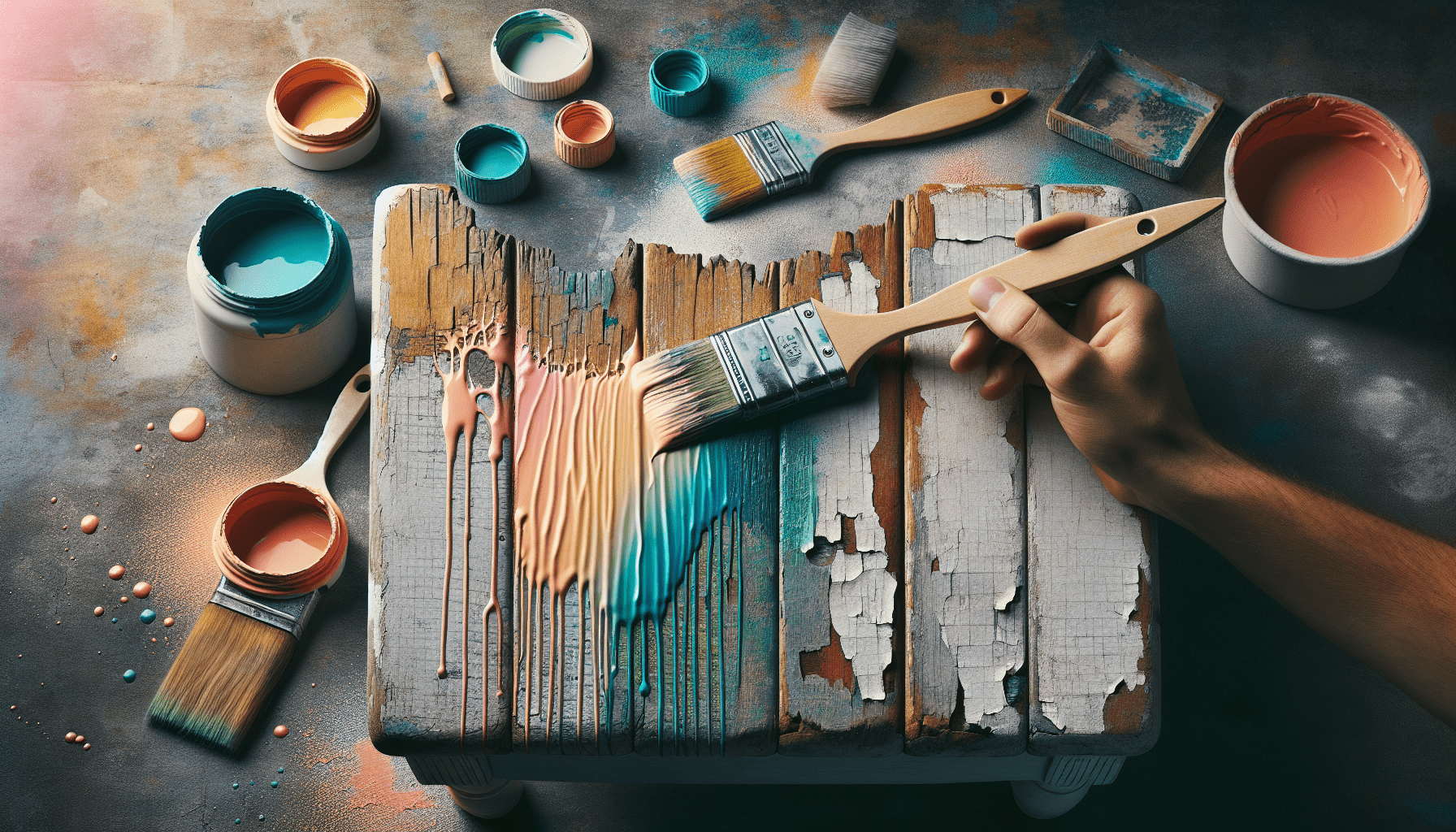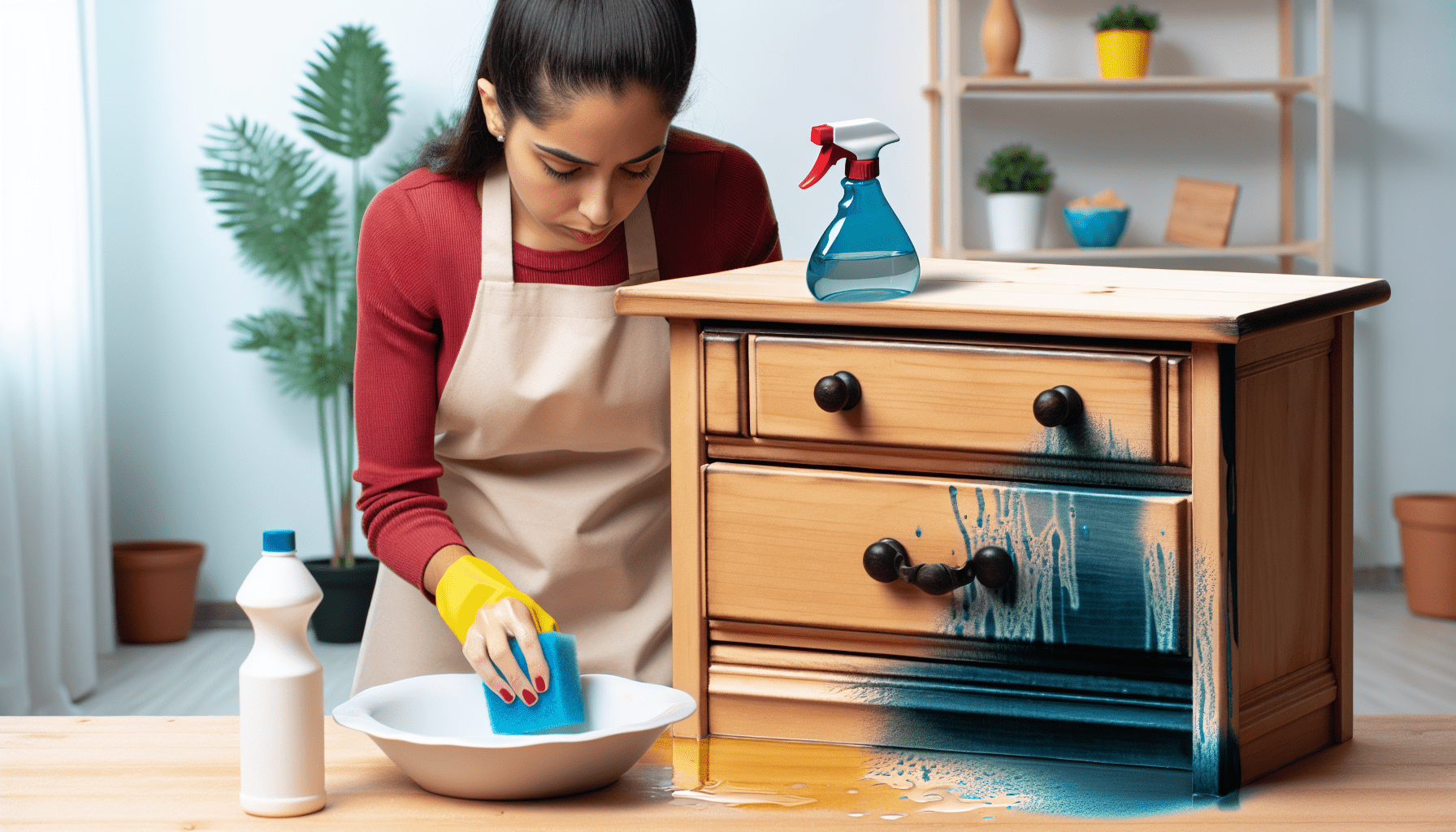Chalk paint has become a popular choice among DIY enthusiasts and professional painters alike, thanks to its unique matte finish and ability to adhere to a wide range of surfaces. However, there seems to be some confusion surrounding the composition of chalk paint. Is it acrylic? In this article, you will discover the truth behind the composition of chalk paint and whether or not it falls under the category of acrylic paint. So, get ready to uncover the science behind this artistic medium and gain a deeper understanding of its properties and applications.
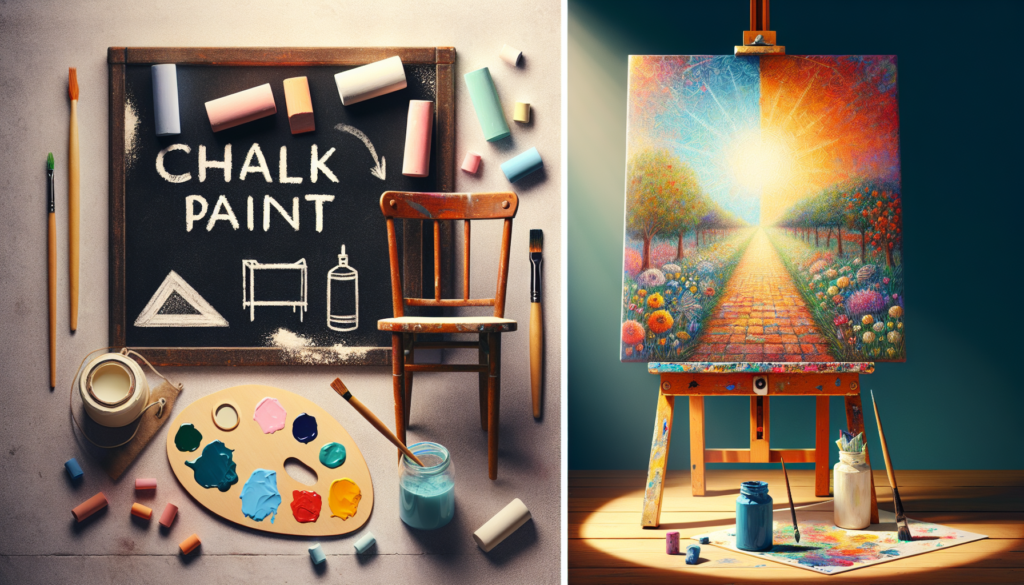
What is Chalk Paint?
Chalk paint is a type of paint that is known for its matte, velvety finish. It has gained popularity among DIY enthusiasts and professional painters alike due to its ease of use and unique aesthetic qualities. Unlike traditional paints, chalk paint does not require priming or sanding before application, making it a convenient option for furniture makeovers and other decorative projects.
Definition of Chalk Paint
Chalk paint is a water-based decorative paint that contains chalk or calcium carbonate as one of its key ingredients. It was developed by Annie Sloan, a British artist, in the early 1990s as a versatile, user-friendly paint that could be applied to various surfaces without the need for extensive preparation. Chalk paint is known for its thick consistency, which allows for good coverage and easy blending.
Composition of Chalk Paint
Chalk paint typically consists of a few simple ingredients, including water, calcium carbonate (or chalk), pigments, and a binder such as acrylic resin or PVA glue. These components work together to create a paint that is easy to apply, adheres well to surfaces, and dries to a flat, matte finish. The presence of calcium carbonate gives chalk paint its unique texture and allows for easy distressing and antiquing techniques.
Differences between Chalk Paint and Acrylic Paint
While both chalk paint and acrylic paint are commonly used in the realm of DIY projects and home décor, there are several key differences between the two. Understanding these differences can help you determine which type of paint is best suited for your specific needs.
Application and Technique
Chalk paint is known for its forgiving nature when it comes to application. It can be applied directly to most surfaces without the need for sanding or priming. Chalk paint also has excellent adhesion properties, allowing it to adhere well to various materials, including wood, metal, and even glass. The thick consistency of chalk paint makes it easy to control and lends itself well to techniques such as distressing, layering, and creating texture.
Acrylic paint, on the other hand, is more versatile in terms of application techniques. It can be applied with brushes, rollers, or even sprayed on, depending on the desired effect. While acrylic paint can also be applied to a wide range of surfaces, it often requires some form of surface preparation, such as sanding or priming, to ensure proper adhesion.
Finish
One of the defining characteristics of chalk paint is its matte, velvety finish. This finish adds a unique charm to painted furniture and décor items and can create a rustic or shabby chic look. Chalk paint also allows for easy distressing, where the paint can be sanded or rubbed off in strategic areas to create an aged or weathered appearance.
Acrylic paint, on the other hand, offers a broader range of finishes. It can be applied in a matte, satin, or glossy finish, depending on the type of paint used and any additional sealers or topcoats applied. Acrylic paint is a popular choice for achieving a smooth, even finish on walls, canvas, and other surfaces.
Coverage and Drying Time
Chalk paint typically offers excellent coverage, often requiring only one or two coats to achieve full opacity. The thick consistency of chalk paint allows for good coverage and reduces the need for multiple layers. Depending on the brand and specific formulation, chalk paint also tends to dry relatively quickly, allowing for faster project completion.
Acrylic paint can vary in terms of coverage, depending on the specific brand and color. Some acrylic paints may require multiple coats for full coverage, especially when working with dark or vibrant colors. The drying time of acrylic paint can also vary, with some paints drying within 30 minutes, while others may take several hours or even days to fully cure.
Durability
When it comes to durability, chalk paint has its limitations. While it can withstand regular use and light wear, it is not as durable as some other types of paint, such as oil-based or enamel paints. Chalk paint is more prone to chipping and can be easily damaged if not properly sealed or protected. To enhance the durability of chalk paint, it is recommended to apply a clear wax or topcoat to seal the painted surface.
Acrylic paint, on the other hand, is known for its durability. Once fully cured, acrylic paint forms a tough, water-resistant surface that can withstand regular wear and tear. Acrylic paint is often used for high-traffic areas such as floors, cabinets, and exterior surfaces where durability is a primary concern.
Is Chalk Paint Acrylic?
Understanding the nature of chalk paint and its composition, one may wonder if it is classified as an acrylic paint. While chalk paint contains some similar components to acrylic paint, such as a binder, it is not typically considered a form of acrylic paint.
Understanding Chalk Paint
Chalk paint is a unique type of paint that was specifically developed to provide an alternative to traditional paints. Its composition, which includes chalk or calcium carbonate, gives it a distinctive texture and finish. Chalk paint is known for being user-friendly, allowing for easy application and a forgiving nature when it comes to surface preparation.
Is Chalk Paint an Acrylic Paint?
Although chalk paint contains a binder, the specific binder used in chalk paint is typically different from that used in acrylic paint. Chalk paint often incorporates PVA glue or another water-based adhesive as its binder, whereas acrylic paint utilizes acrylic resin as its binder. This distinction sets chalk paint apart from acrylic paint, as the different binders contribute to variations in application, drying time, and durability.
Pros and Cons of Chalk Paint
Before diving into a chalk paint project, it’s essential to consider the advantages and disadvantages of using this type of paint. While chalk paint can provide beautiful results and a unique finish, it may not be suitable for every situation.
Advantages of Chalk Paint
-
Easy to use: Chalk paint requires minimal surface preparation, making it a convenient option for both beginners and experienced painters. The thick consistency of chalk paint also allows for easy application and control.
-
Distressing and antiquing: The texture and formulation of chalk paint make it ideal for distressing and creating an aged or weathered appearance. This versatility allows for artistic freedom and adds character to painted surfaces.
-
Matte finish: The velvety, matte finish of chalk paint adds a unique charm to furniture and décor items. It can create a rustic or shabby chic look, adding warmth and nostalgia to any space.
-
Versatility: Chalk paint can be used on various surfaces, including wood, metal, glass, and even fabric. This versatility allows for creative freedom and the ability to transform different objects and materials.
Disadvantages of Chalk Paint
-
Limited durability: Chalk paint is not as durable as other types of paint, such as oil-based or enamel paints. It is more prone to chipping and damage, especially in high-traffic areas or when exposed to moisture.
-
Sealing and protection: To enhance the durability of chalk paint, it is necessary to apply a clear wax or topcoat to seal the painted surface. This additional step may add time and effort to the painting process.
-
Limited color range: While chalk paint comes in a variety of colors, the range may be more limited compared to acrylic or other types of paint. This limitation may require additional mixing or layering to achieve specific shades or tones.
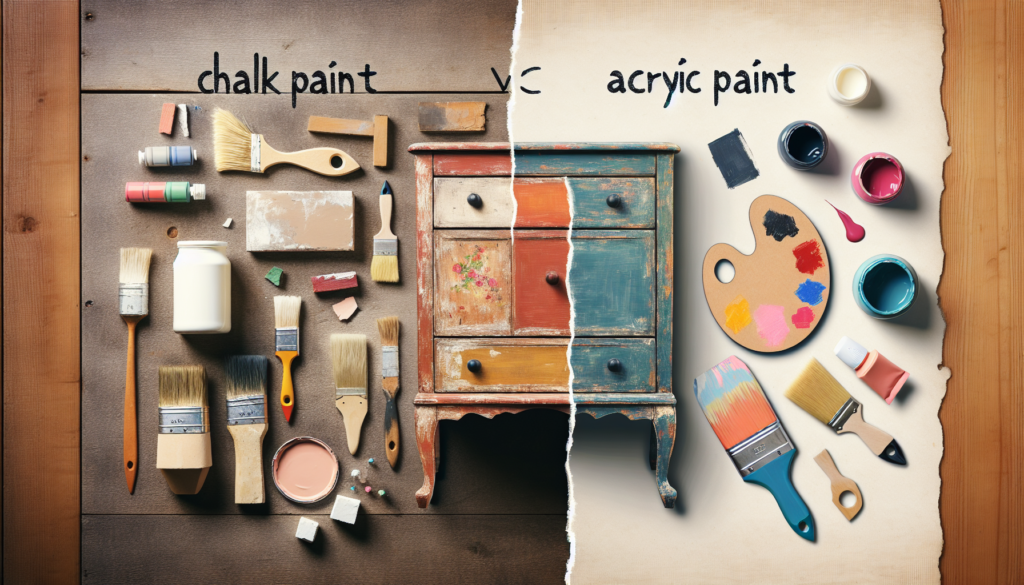
Common Uses of Chalk Paint
Chalk paint has gained popularity for its versatility and ability to transform various surfaces and objects. Some of the common uses of chalk paint include:
Painting Furniture
One of the primary uses of chalk paint is for painting furniture. Whether it’s an old piece in need of a makeover or a new unfinished piece, chalk paint can be applied directly to wood, metal, or laminate surfaces. The matte finish of chalk paint gives furniture a unique and charming look, and the ability to distress and layer the paint allows for customized results.
Decorative Effects
Chalk paint can also be used to create decorative effects on walls, ceilings, and other surfaces. Techniques such as color washing, stencil work, or creating texture using different brushes or tools can be easily achieved with chalk paint. The versatility of chalk paint allows for creative expression and adds visual interest to any space.
Upcycling Projects
Chalk paint is a popular choice for upcycling projects, where old or discarded items are transformed into something new and unique. From repurposing old picture frames to revamping thrift store finds, chalk paint offers endless possibilities for breathing new life into outdated or worn-out objects. The forgiving nature of chalk paint allows for experimentation and creativity in upcycling projects.
Tips for Using Chalk Paint
To ensure the best results when using chalk paint, it is helpful to follow a few tips and guidelines. These tips can help you achieve a smooth finish and enhance the durability of your painted surfaces.
Preparing the Surface
While chalk paint does not typically require extensive surface preparation, it is still essential to clean the surface thoroughly before painting. Remove any dirt, grease, or loose paint to ensure proper adhesion. For glossy or smooth surfaces, it may be helpful to lightly sand or prime the surface to create a better bond for the chalk paint.
Application Techniques
To achieve a smooth, even finish with chalk paint, it is recommended to use a high-quality brush or roller. Apply the paint in thin layers, using long, even strokes. Avoid overloading the brush or roller with paint, as this can lead to drips or uneven coverage. For textured or distressed effects, experiment with different brushes or apply additional layers of paint in strategic areas.
Sealing and Protecting the Paint
To enhance the durability and longevity of chalk paint, it is important to seal the painted surface. There are several options for sealing chalk paint, including clear wax, polyurethane topcoats, or varnish. Apply the sealer according to the manufacturer’s instructions, ensuring even coverage and smooth application. The sealer will help protect the paint from scratches, moisture, and general wear and tear.
Alternatives to Chalk Paint
While chalk paint has gained popularity in recent years, there are several alternatives available for those seeking different finishes or characteristics. Some common alternatives to chalk paint include:
Acrylic Paint
Acrylic paint offers a wide range of finishes and can be used for various surfaces and projects. It provides excellent coverage, durability, and a quicker drying time. Acrylic paint can be mixed to create custom colors and can be applied with different techniques and tools.
Milk Paint
Milk paint is a non-toxic, environmentally friendly paint that has been used for centuries. It is typically made from milk protein, lime, and pigments, giving it a unique, matte finish. Milk paint can create a subtle, time-worn look and is often used in furniture restoration and period-style projects.
Mineral Paint
Mineral paint, also known as clay paint or earth paint, is a natural paint option that contains clay, chalk, or other minerals as its main ingredients. It offers a matte or low-sheen finish and is often used for creating textured or layered effects. Mineral paint is known for its eco-friendliness and breathability, making it a suitable option for both indoor and outdoor projects.
Conclusion
Chalk paint is a versatile and user-friendly option for DIY enthusiasts and professional painters alike. Its unique composition and matte finish add charm and character to furniture and decorative projects. While chalk paint has its advantages, it is important to consider its limitations, especially in terms of durability. By understanding the differences between chalk paint and other paint types, you can choose the best option for your specific project needs. Whether you decide to embrace the vintage appeal of chalk paint or opt for an alternative, the world of paint offers endless possibilities for creative expression and transformation.
